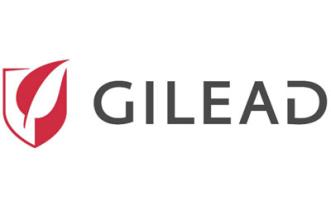PharmaSources/biopharmadiveMarch 26, 2019
Tag: HIV , gilead , prices , top-selling
Once the hep C titan, Gilead is now fortifying its still dominant HIV business with a round of list price hikes it took over the weekend under new chief Daniel O’Day, as the drugmaker looks to stem more than two years of shrinking sales revenue.
The biotech has hiked prices on its big ticket products — including its arsenal of HIV drugs, but excluding its HCV franchise and CAR-T therapy Yescarta — by 4.9%, which is in line historically with its practice of raising prices annually in the first quarter, according to Cowen’s Phil Nadeau.
(Source: Endpts.com)

Gilead hopes revenues will stabilize in 2019, after three consecutive years of net sales declines. The Foster City, California-based biotech has predicted its sales could shrink around 2% or grow up to 0.5% this year.
The price increases follow some high-level executive change-ups earlier this month, with Daniel O'Day officially starting as CEO on March 1 and Alessandro Riva announcing an April departure from his role as Gilead's head of oncology.
The HIV market is a core place for growth, with Gilead's drugs account for a majority share against rival GlaxoSmithKline. Van Buren wrote in his March 17 note that he expects Gilead's top HIV drugs to grow by about 15% in 2019.
A Gilead spokesperson credited the company's price increases to "the rising costs of goods and services necessary to produce groundbreaking medicines."
"This increase is lower than the standard measure of health care inflation, based on an independent estimate of growth in health expenditures, and is lower than price increases in previous years," the spokesperson wrote in an email to BioPharma Dive.
Overall, Gilead's actions fit the emerging trend in list price increases for the pharma and biotech industries — fewer hikes at lower rates than years past, but focused on strategically important products.
For instance, the average price increase across the industry in January 2019 was about 6%, down from roughly 8% last year and 12% in 2014, according to an analysis published in February by Raymond James.
The bulk of Gilead's recent price hikes were on top-selling HIV medications like Genvoya and Truvada, though they also included some hepatitis B medicines, along with a few others.
| Drug | Therapeutic area | 2018 net sales |
|---|---|---|
| Genvoya | HIV | $4.62 billion |
| Truvada | HIV | $3.00 billion |
| Odefsey | HIV | $1.60 billion |
| Descovy | HIV | $1.58 billion |
| Atripla | HIV | $1.21 billion |
| Biktarvy | HIV | $1.18 billion |
| Letairis | Pulmonary arterial hypertension | $943 million |
| Ranexa | Chronic angina | $758 million |
| Complera | HIV | $653 million |
| Stribild | HIV | $644 million |
| Vemlidy | Chronic HBV | $321 million |
| Viread | Chronic HBV | $307 million |
| Zydelig | Oncology | $133 million |
| Hepsera | Hepatitis B | Not listed |
In hiking prices, drugmakers show some signs of tempering increases
Historically, about 40% of the industry's price hikes for the year occur in January, the bank's report found, making the month an important barometer of pricing for the year ahead.
With fresh data from last month in hand, Raymond James' Wilbur predicted a new normal of mid-single digit hikes, with the potential for future moves to more closely track inflation levels.
"The days of double-digit price increases are long gone and the new pricing model has increasingly tended toward a series of modestly lower mid-single digit increases," Wilbur wrote.
| Company | Weighted price inflation |
|---|---|
| Purdue | 9.5% |
| Allergan | 9.3% |
| Teva | 8.5% |
| Almirall | 7.7% |
| Novartis | 7.3% |
SOURCE: Raymond James
The analysis tracked roughly 6,500 branded drugs by wholesale acquisition cost broken down by individual product packaging configurations. Measured year over year, the total number of price increases dropped from 2,383 last January to 2,103 last month.
While that figure's meaning is diluted somewhat by including multiple variations of a single drug, the findings correspond with recent moves by drugmakers to take a more selective approach to pricing.
Weighted price increase figures take into account a drug's sales over the past 12 months, in effect tying the increases to how much revenue a product has earned.
The bank's findings come as the Iqvia Institute for Human Data Science recently forecasted a similar future for pharmaceutical pricing over the next few years.
The group recently predicted invoice price growth will range between 4% and 7% in the near term. Invoice prices, which largely track with list prices, are what a hospital or pharmacy pays to drug distributors and can include some discounts, such as for volume.
Pharmas and hospital medical supply companies often argue that net prices, accounting for rebates, paint a clearer picture of drug pricing than do list prices — messaging that Health and Human Services Secretary Alex Azar has recently pushed back against.
The Iqvia report will likely give drugmakers more ammunition to make their case, however, forecasting net price growth for protected brands in the next five years to be between 0% and 3%.
Last year was the first time in recent years that net price growth fell below inflation levels as measured by consumer prices, the report found.
Source: biopharmadive
-----------------------------------------------------------------------
Editor's Note:
To apply for becoming a contributor of En-CPhI.cn,
welcome to send your CV and sample works to us,
Email: Julia.Zhang@ubmsinoexpo.com.


Contact Us
Tel: (+86) 400 610 1188
WhatsApp/Telegram/Wechat: +86 13621645194
Follow Us:




 Pharma Sources Insight January 2025
Pharma Sources Insight January 2025


